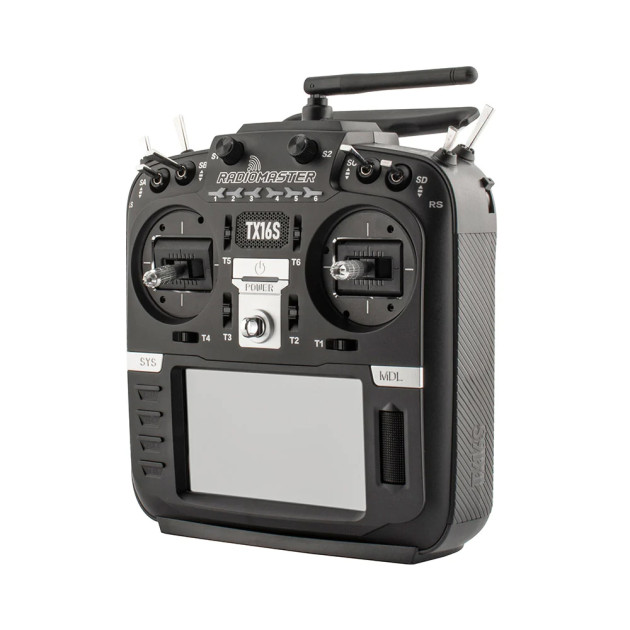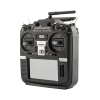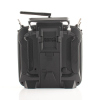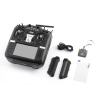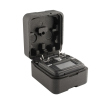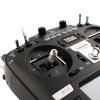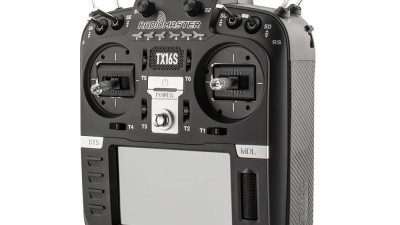Radiomaster TX16S MKII is a high-end radio used by the best FPV pilots. TX16S is a classic large format radio. With a large display and lots of switches, it is suitable for more complicated models in addition to FPV copters.
The Radiomaster TX16 uses the fourth version of the hall gimbals. The non-contact position sensing makes the control more accurate and no wear and tear on conventional potentiometers. Gimbals can conveniently change the stiffness of the springs and the knife range (38°-54°) from the outside without having to disassemble the radio. Improved AG01 gimbals (offered separately) are also available for the most demanding pilots. Knips are complete with thirteen aux switches. A large 4.3" color TFT touchscreen with 480x272px resolution is used for radio setup and telemetry data display. An integrated speaker is also used to inform the pilot. For noisier environments, an audio jack is available for connecting headphones. The radio can also be connected to a PC via the top USB connector for simulator training.
For fans of push-button setup, the Radiomaster TX16 retains the scrolling roller and four buttons as found on other Radiomaster models. The Radiomaster TX16 MKII uses opensource EdgeTX firmware (successor to OpenTX), which is fully customizable. The radio is powered by a pair of 18650 Liion batteries (not included) or 2S batteries. The battery is recharged via the bottom USB-C connector.
The big advantage of the transmitter is the integrated ELRS module. ExpressLRS (abbreviated ELRS) is an open source project and the transmit and receive modules are produced by multiple manufacturers. ELRS is currently one of the most advanced RC transmissions. It offers reliable long distance link, high refresh rate, adjustable power, update via wifi, bluetooth connectivity and more. The ELRS at 2.4GHz outperforms conventional RC systems in every way while maintaining short antennas. Bluetooth will be especially appreciated by simulator fans, where it can connect wirelessly to a PC. There is a standard large JR shaft on the back of the radio for possible expansion with an external transmitter module.
Key Features
- Size: 287*129*184mm
- Weight: 750g
- Power battery: 2x 18650 Li-ion or 2S Lipo (batteries not included) 6.6-8.4V
- Number of channels: up to 16
- Display: 4.3" 480x272px TFT color touch
- Quality Hall gimbals V4
- Integrated ELRS module (250mW)
- Voice functions
- Vibration functions
- SD card: up to 8GB
- Firmware: EdgeTX
- External JR shaft
Package Includes
- 1x Radio
- 1x USB cable
- 1x 18650 Li-ion battery compartment
- 1x SD card
- 1x Spare grips
